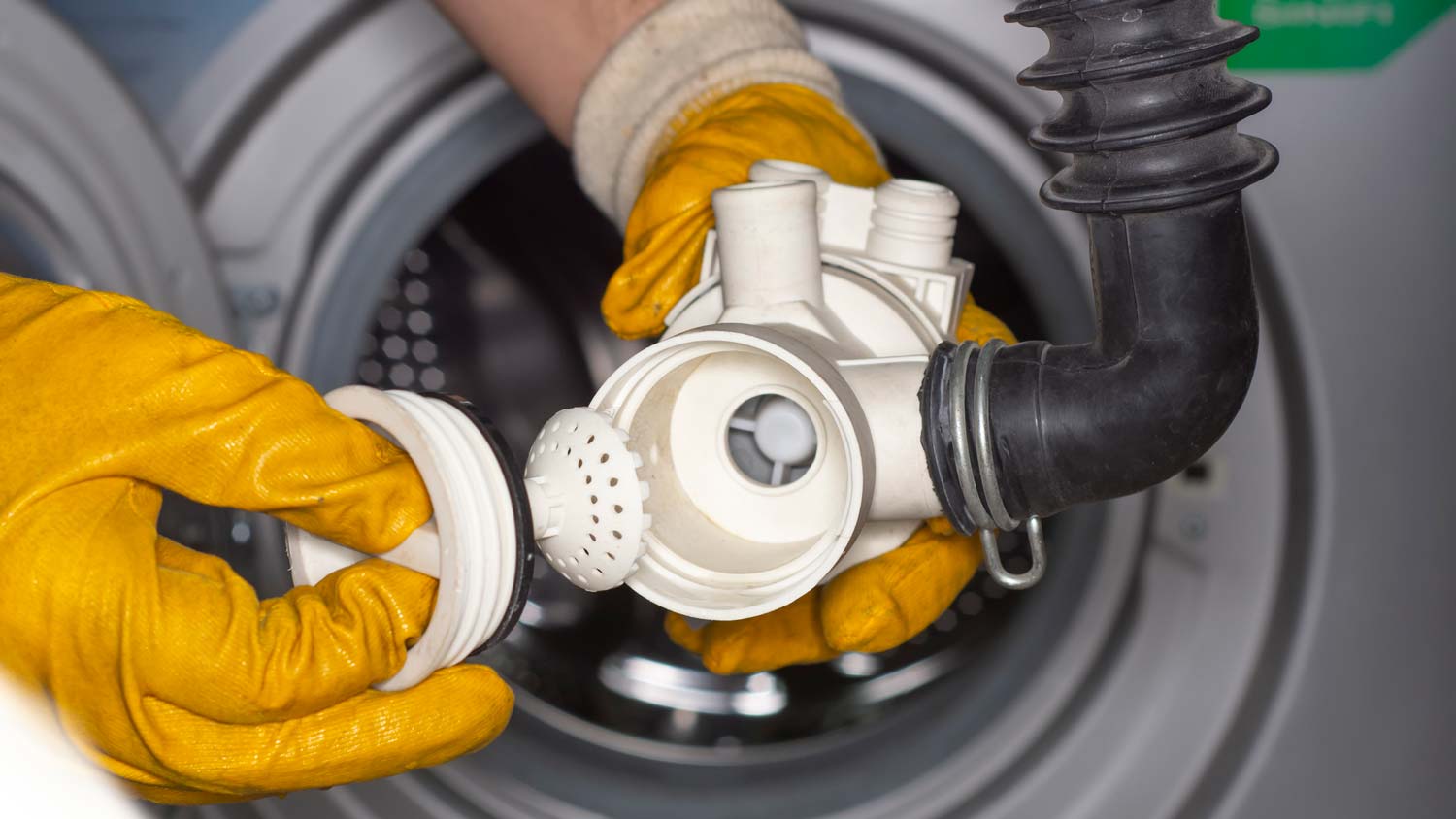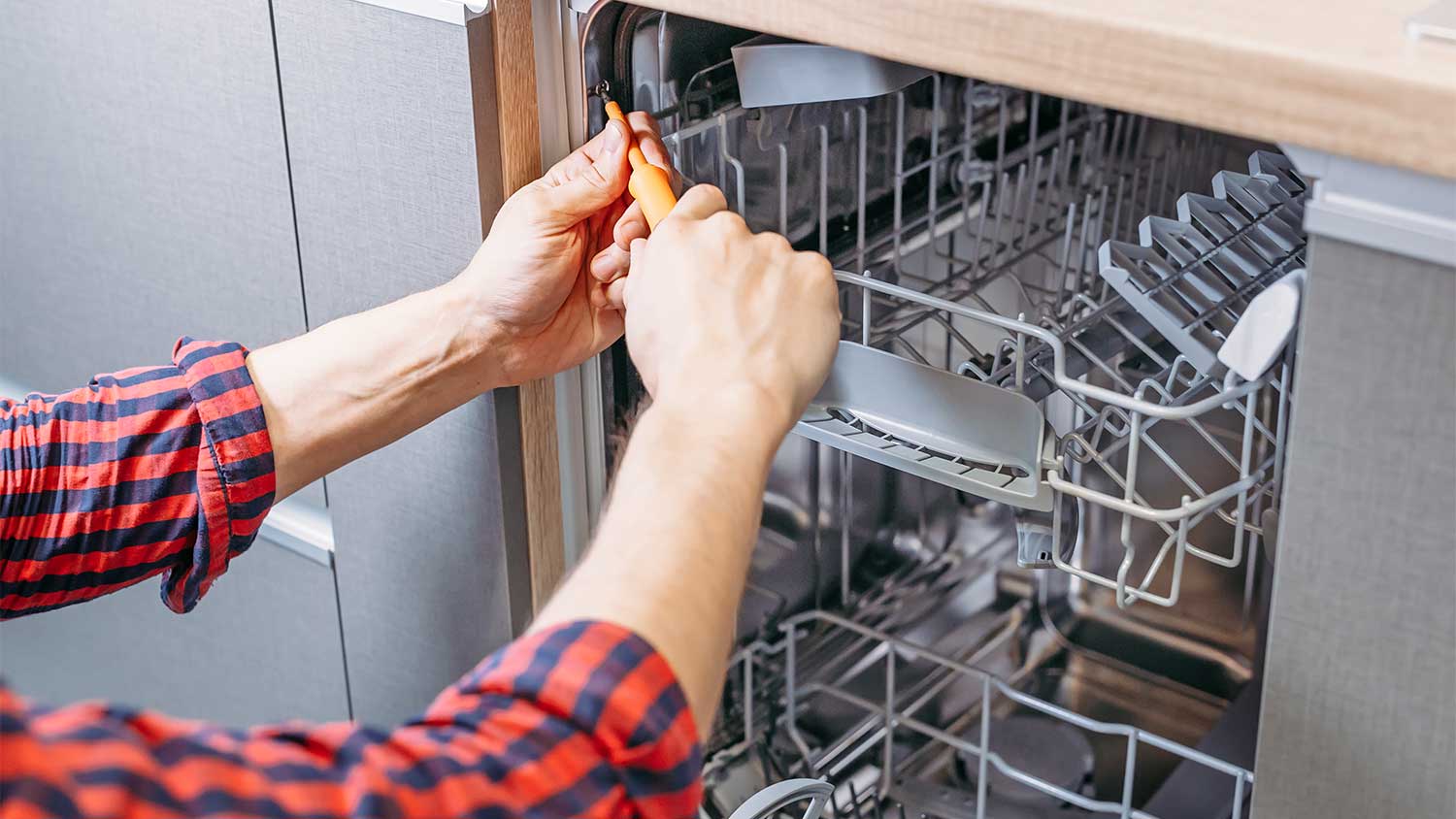
Depending on repair needs and machine age and type, the cost to replace a heating element in a dryer can vary. Learn the average repair costs.
Keep your laundry spinning right round


Listen to your washer; squeaks, thumps or other noises could be a sign that something is amiss.
While some solutions are DIY, others are best left to professionals.
Your issue could be electric, which may require hiring an electrician.
A washing machine is an indispensable appliance that keeps our clothes and linens clean and our lives organized. When it suddenly stops spinning, it can be both frustrating and concerning. In this guide, we'll delve into the various factors that might explain why your washer won’t spin.
If your washing machine won’t spin, check the lid switch. The lid switch is a fundamental safety feature in a washing machine that ensures the spin cycle only engages when the lid is securely closed. If the lid switch malfunctions, you may notice that your machine doesn’t enter the spin cycle at all and hear a distinct clicking sound if you try to manually initiate the spin cycle.
A malfunctioning lid switch is not only an inconvenience but also a potential safety hazard. If left unfixed, it could lead to water spills and even pose a potential risk of injury due to the machine operating with an open lid.
To address a lid switch issue, firmly close the washer’s lid and try to start the spin cycle. If the problem continues, refer to your washing machine's user manual for guidance on accessing and replacing the lid switch. If you're uncertain about the replacement process, seeking the help of a washing machine repair technician near you is strongly advised.
The drive belt plays a crucial role in transferring power from the washer’s motor to its drum for the spinning action. A loose, worn, or broken belt can result in a distinctive squeaking or screeching noise during operation.
While a loose or damaged drive belt might not pose an immediate safety risk, it will prevent the washer from spinning. Neglecting this issue could lead to further complications and even harm to other components if the belt breaks.
If you hear a persistent squeaking noise when your washing machine is running, consult your user manual to learn how to access the drive belt.
If it's merely loose, follow the manual's instructions and tighten it appropriately. If the belt is damaged, replacing it is recommended. Be mindful that working with a washing machine belt might require a certain level of mechanical proficiency.

Modern washing machines are equipped with door locks that prevent the door from opening when the washer is in use. If the door lock malfunctions, you might notice that the spin cycle doesn't engage, and hear a repetitive clicking sound.
While a faulty door lock might not present a serious hazard, it does disrupt the machine's normal operation and might even result in water leakage.
Confirm that the door closes securely and triggers the lock mechanism. If it doesn't, you may need to replace the lock assembly. Refer to your washing machine's user manual for instructions on how to access and replace the door lock.
The motor is the driving force that powers the drum's movement, including the essential spinning action. If the motor malfunctions, you might hear a distinctive buzzing or humming sound when the spin cycle is active.
The motor is the driving force that powers the drum's movement, including the essential spinning action. If the motor malfunctions, you might hear a distinctive buzzing or humming sound when the spin cycle is active.
Severity and consequences: A faulty motor goes beyond hindering spinning; it disrupts the entire functionality of your washing machine. Ignoring this issue can lead to longer washing times, damp clothes, and an overall inefficient washing process.
When it comes to appliances, you have to consider the extent of the issue. If it is minor problems or something that simply requires maintenance, then it might be more cost-effective to do a repair. If the failure is a major component of the appliance, then it will likely be easier and more affordable in the long run to just replace it and get peace of mind.
A faulty motor goes beyond hindering spinning; it disrupts the entire functionality of your washing machine. Ignoring this issue can lead to longer washing times, damp clothes, and an overall inefficient washing process.
Diagnosing and repairing a motor issue involves complex electrical work and is best left to a professional electrician near you. Professional washing machine repair services cost between $50 and $150 per hour.
Filling your washing machine with an excessive amount of clothes or linens, or unevenly distributing the weight of your load, can lead to imbalanced spinning. If this occurs, you’ll hear a loud thumping noise during the cycle.
While not a mechanical problem, overloading the machine places stress on the motor, drum, and other components. This can lead to damage to the machine and/or the floor the machine sits on.
All you may need to do is learn how to balance a washer. This includes reducing your load size and distributing the load evenly in the drum. Many modern machines have a sensor that can detect an imbalance and attempt to redistribute the load automatically.
Your washing machine will not spin or may make a repetitive sound if it’s unbalanced. While annoying, it usually isn’t a sign of a larger problem and simply requires some balancing. Washing machine sensors will quickly detect a problem, and your machine won’t spin.
An unbalanced machine isn’t a problem on its own, but it quickly leads to a degradation of the motor, drum, and any other piece. Unless the problem is remedied, expect a piece—or many—to start failing within a relatively short time.
Check the bottom of the machine. An unbalanced machine is often caused by one of the leveling screws screwing in overtime in one of the corners. You can use a bubble level or even your phone to make sure the machine is balanced at 0 degrees.
Shock absorbers play a critical role in minimizing vibrations during the spinning process. When they break or wear out, you might experience pronounced shaking and vibrating noises.
While not a critical mechanical issue, broken shock absorbers lead to noisy and excessively vibrating spin cycles. Moreover, the heightened vibrations could potentially cause harm to other machine components due to the increased movement.
Replacing shock absorbers requires a moderate level of DIY skill. Consult your washing machine's user manual for instructions on accessing and replacing these components. If you're unsure about the process, reach out to a professional.

The drain pump removes water from the washing machine during and after each cycle. If the pump has a clog or malfunctions, it can hamper the draining process, which can cause water to accumulate in the drum and hinder the spin cycle.
You may notice water remaining in the drum after the wash cycle and hear a gurgling or humming sound as the pump struggles to drain the water.
A drain pump that has a clog or is faulty not only prevents your washing machine from draining, but also poses a risk of water leakage. Prolonged water accumulation can also lead to mold growth and unpleasant odors.
Refer to your washing machine’s user manual for instructions on how to access the drain pump. Check for any clogs or debris that could be obstructing the pump. If your pump is damaged, you should replace it so that your machine can properly drain and spin. If you’re unsure of what the repair entails, you can reach out to a professional.
The clutch assembly connects your washer’s drum and motor, allowing the drum to transition between cycles, including the spin cycle. If the clutch assembly is worn out or damaged, the drum might not engage in the spin cycle and you may hear a grinding or rattling noise.
The absence of spinning, accompanied by grinding or rattling noises during the cycle, could mean you have a faulty clutch assembly.
A worn-out clutch assembly disrupts the spinning cycle and could lead to further damage if left unfixed. Ignoring this issue might lead to the washing machine's inability to work properly.
Consult your washing machine's user manual for the steps to access the clutch assembly. If you suspect this is the cause of your problem, it's recommended to reach out to a professional technician for diagnosis and replacement. Attempting to replace the clutch assembly without proper experience could lead to additional repairs.
The electronic control board is the brain of your washing machine, coordinating the various cycles, including the spin cycle. If your control board malfunctions due to an electrical issue or internal damage, it may prevent the spin cycle from initiating. An unresponsive control panel, display errors, or inconsistent cycle performance could indicate an electronic control board problem.
A malfunctioning electronic control board disrupts the overall operation of your washing machine and affects multiple functions—including the spin cycle. Ignoring this issue can lead to further problems and an unreliable appliance.
If you suspect the electronic control board is the cause of your spin cycle issue, consult your washing machine’s user manual for guidance on how to diagnose and replace this component. Given the complexity of electrical systems, however, we recommend that you consult with a pro.
According to Angi customers, about 21% of washer and dryer problems involve a system that doesn’t work at all. Other commonly cited problems include being too noisy and not draining properly, at 10% each. Check out the most commonly requested projects:
Unless you have a DIY background, especially with appliances, you shouldn’t try a DIY washing machine fix. You can swap out a loose belt, but that’s one of the only remedies we’d recommend tackling yourself.
Hiring a washing machine repair pro will often cost around $50 to $110 an hour to work on the machine (plus parts), but between paying a pro or DIYing the job and needing to replace the machine later, we choose hiring a pro. Another reason is that a professional may carry diagnostic equipment that homeowners don’t have access to.
From average costs to expert advice, get all the answers you need to get your job done.

Depending on repair needs and machine age and type, the cost to replace a heating element in a dryer can vary. Learn the average repair costs.

Installing a gas dryer can help you save on your monthly energy bills. Depending on whether you need a new gas line, gas dryer installation costs will vary greatly.

Get expert insights on dishwasher repair cost, including average prices, key cost factors, and tips to save money on repairs.

Is repairing your oven worth it, or should you consider a replacement? There are several factors to consider when deciding to repair or replace.

Finding the right pro to install your new washer and dryer will help the machines work better, last longer, and ensure everything is connected correctly.

Burnt popcorn or a candle gone wrong can smell pungent and overwhelming. Find out how to get these smoky smells out of your house for good.